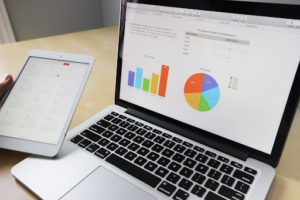As a premier provider of financial advice and solutions, Sovereign Wealth Management always strives to keep our clients informed about the latest developments in retirement planning. The Setting Every Community Up for Retirement Enhancement (SECURE) 2.0 Act was signed into law recently, ushering in a new era of retirement planning for Americans. This new legislation offers an array of changes aimed at strengthening the retirement system and improving financial readiness for retirees. In this blog post, we’ll delve into the SECURE 2.0 Act’s key provisions and discuss how they may impact your retirement savings strategy.
Changes to Required Minimum Distributions (RMDs)
One of the most significant provisions of the SECURE 2.0 Act is the modification of RMD rules. RMDs are mandatory withdrawals from retirement accounts, including traditional IRAs and 401(k)s, that account holders must take once they reach a certain age.
Previously, retirees had to start taking RMDs at age 72. Under the new legislation, the RMD age will increase to 73 starting in 2023 and to 75 in 2033. This change allows individuals to delay taking a mandatory withdrawal, providing more time for their investments to grow. The act also reduces the penalties for failing to take an RMD from 50% to 25% of the RMD amount and further reduces it to 10% for IRA owners who correct their mistake in a timely manner. Additionally, Roth accounts within employer retirement plans will no longer be subject to RMDs beginning in 2024.
Higher Catch-Up Contributions
The SECURE 2.0 Act increases catch-up contributions for older workers, allowing them to save more for retirement. Starting in 2025, individuals aged 60-63 can make catch-up contributions of up to $10,000 annually to their workplace retirement plans. Additionally, beginning in 2024, the $1,000 catch-up contribution limit for IRA account holders aged 50 and over will be indexed to inflation.
Matching Contributions for Roth Accounts
Under the new legislation, employers can offer matching contributions to employees’ Roth accounts. This provides an additional incentive for employees to contribute to Roth retirement plans, which allow after-tax contributions to grow tax-free.
Expansion of Qualified Charitable Distributions (QCDs)
Starting in 2023, individuals aged 70½ and older can make a one-time gift of up to $50,000, adjusted annually for inflation, to certain types of charitable organizations as part of their QCD limit. This change allows retirees to support their favorite charities while reducing their taxable income.
Changes to Annuities
The SECURE 2.0 Act increases the premium limits for Qualified Longevity Annuity Contracts (QLACs) from $145,000 to $200,000, effective January 1, 2023. It also eliminates a requirement that previously limited QLAC premiums to 25% of an individual’s retirement account balance.
 Automatic Enrollment and Plan Portability
Automatic Enrollment and Plan Portability
Beginning in 2025, the act mandates that new 401(k) and 403(b) plans must automatically enroll eligible employees at a contribution rate of at least 3%. The legislation also allows retirement plan service providers to offer plan sponsors automatic portability services, facilitating the transfer of employees’ retirement accounts when they change jobs.
Introduction of Emergency Savings Accounts
Starting in 2024, defined contribution retirement plans can add an emergency savings account designated as a Roth account for non-highly compensated employees. This change aims to help individuals save for unexpected expenses and reduce the need to tap into their retirement savings for emergencies.
Student Loan Debt Solutions
To support workers who are paying off student loans, the SECURE 2.0 Act allows employers to match employee student loan payments with contributions to a retirement account starting in 2024. This provision encourages employees to save for retirement while simultaneously addressing their educational debt.
Changes to 529 Plans
The new legislation enables 529 plan assets to be rolled over to a Roth IRA for the beneficiary after 15 years, subject to annual Roth contribution limits and a lifetime limit of $35,000. This change offers greater flexibility for those using 529 plans to save for educational expenses.
In Closing
The SECURE 2.0 Act presents a wide range of opportunities for Americans to strengthen their retirement savings and overall financial well-being. By understanding the provisions of this new legislation, you can better tailor your retirement strategy to take advantage of these changes.
At Sovereign Wealth Management, we are committed to helping our clients navigate the evolving landscape of retirement planning. We understand that each individual’s financial situation is unique, and our experienced advisors are here to provide personalized guidance tailored to your needs.
As always, it is crucial to consult with your financial advisor or tax professional to determine how the SECURE 2.0 Act changes may apply to your specific circumstances. If you have any questions about the act’s provisions or need assistance with your retirement planning, please don’t hesitate to reach out to our team at Sovereign Wealth Management.
With the SECURE 2.0 Act in place, now is the perfect time to review your retirement strategy and ensure you are making the most of the new opportunities available. Contact us today to schedule a consultation and begin securing your financial future.
The commentary on this blog reflects the personal opinions, viewpoints and analyses of the author, JEFFREY TRUCHON, and should not be regarded as a description of advisory services provided by Foundations Investment Advisors, LLC (“Foundations”), or performance returns of any Foundations client. The views reflected in the commentary are subject to change at any time without notice. Any mention of a particular security and related performance data is not a recommendation to buy or sell that security, or any security. Foundations manages its clients’ accounts using a variety of investment techniques and strategies, which are not necessarily discussed in the commentary. Foundations deems reliable any statistical data or information obtained from or prepared by third party sources that is included in any commentary, but in no way guarantees its accuracy or completeness.
